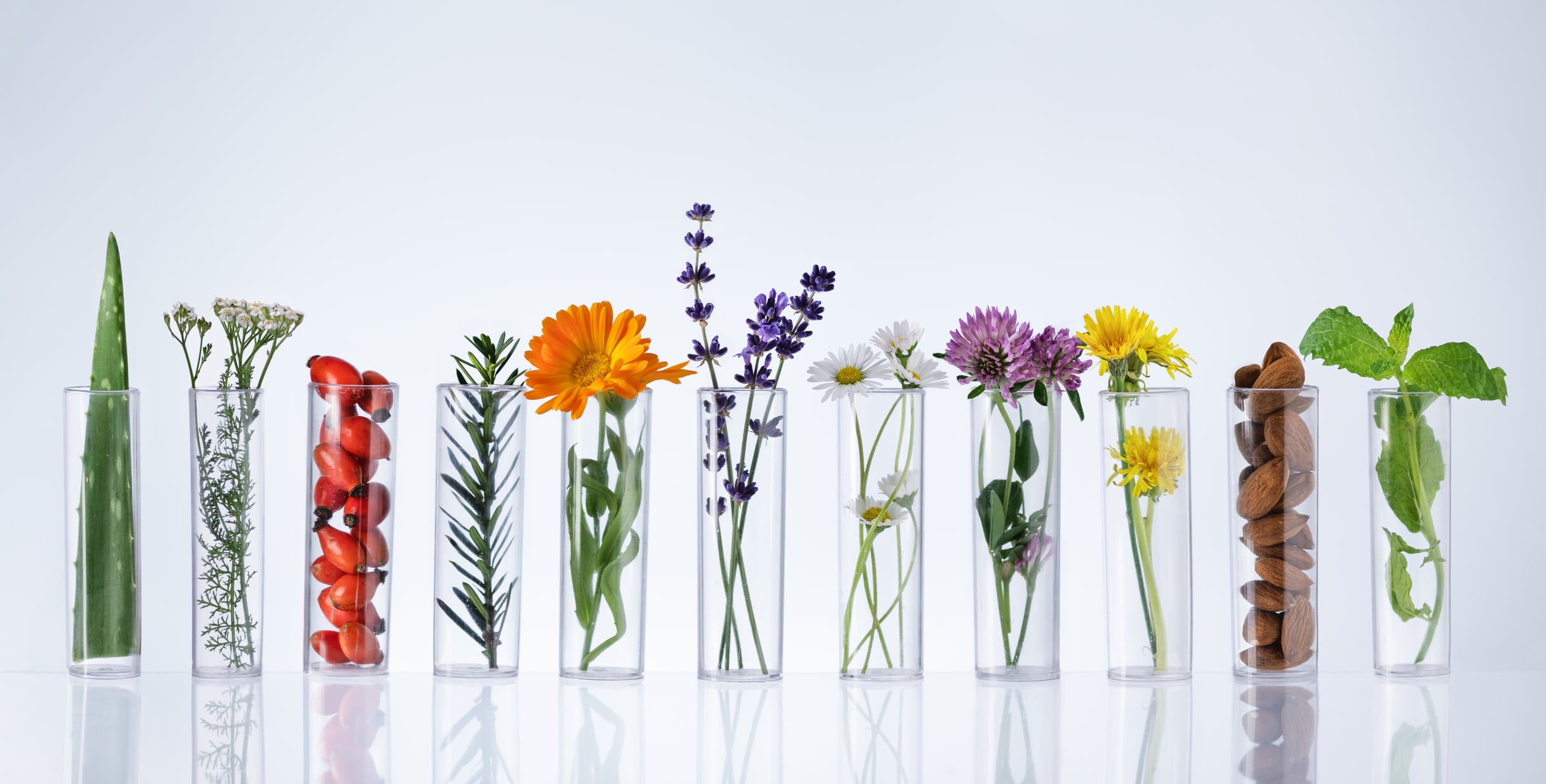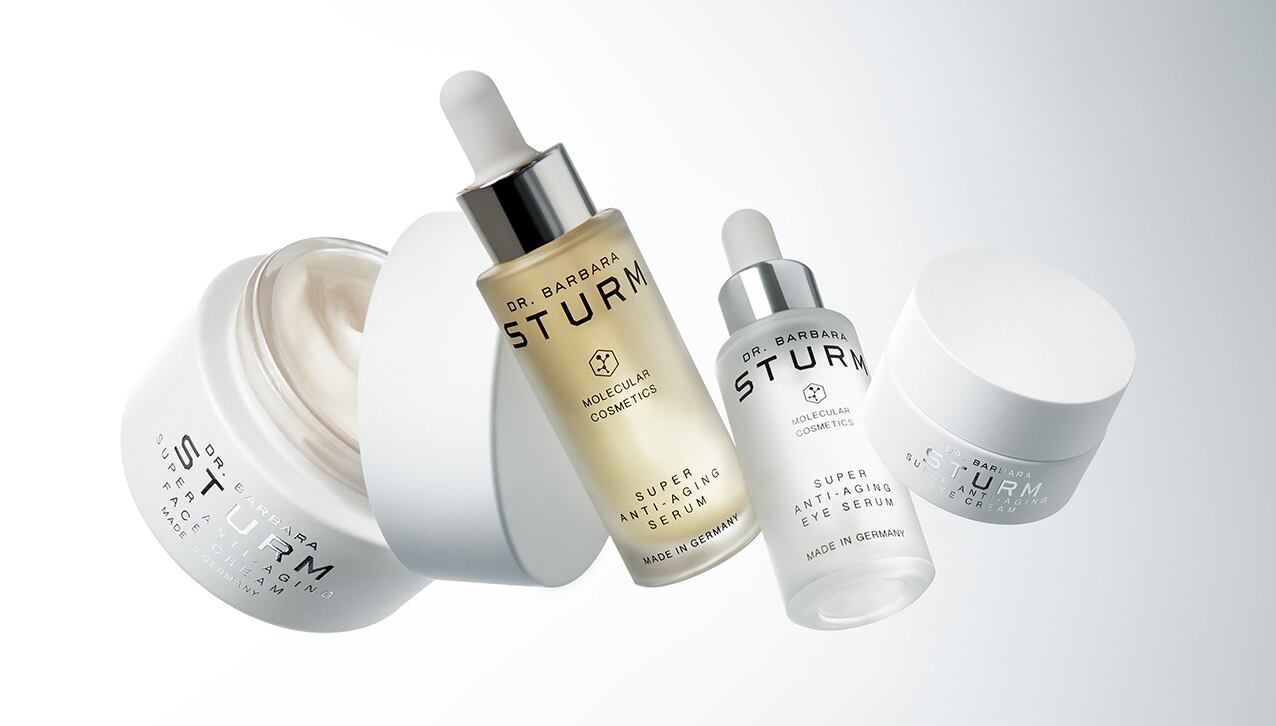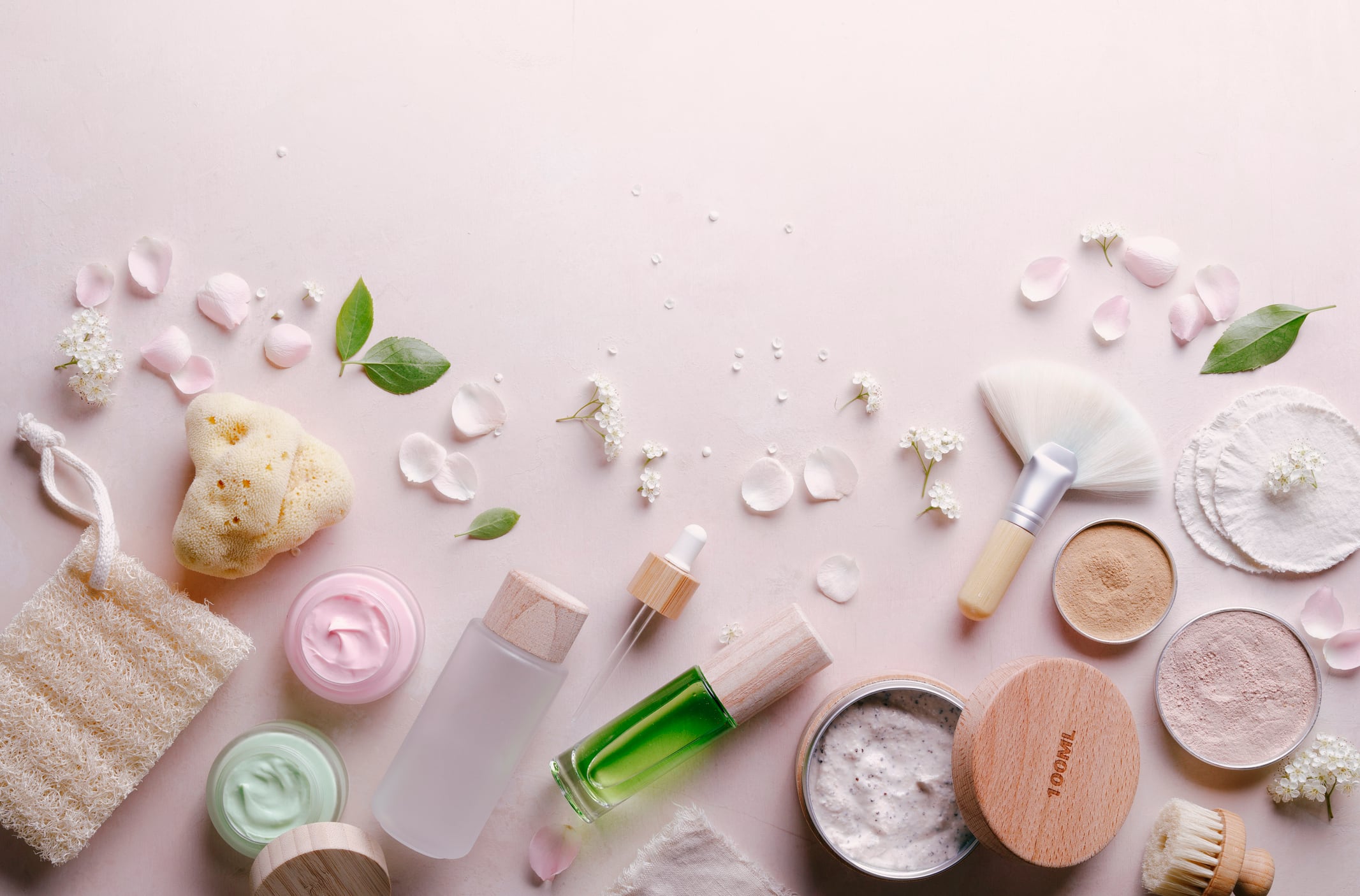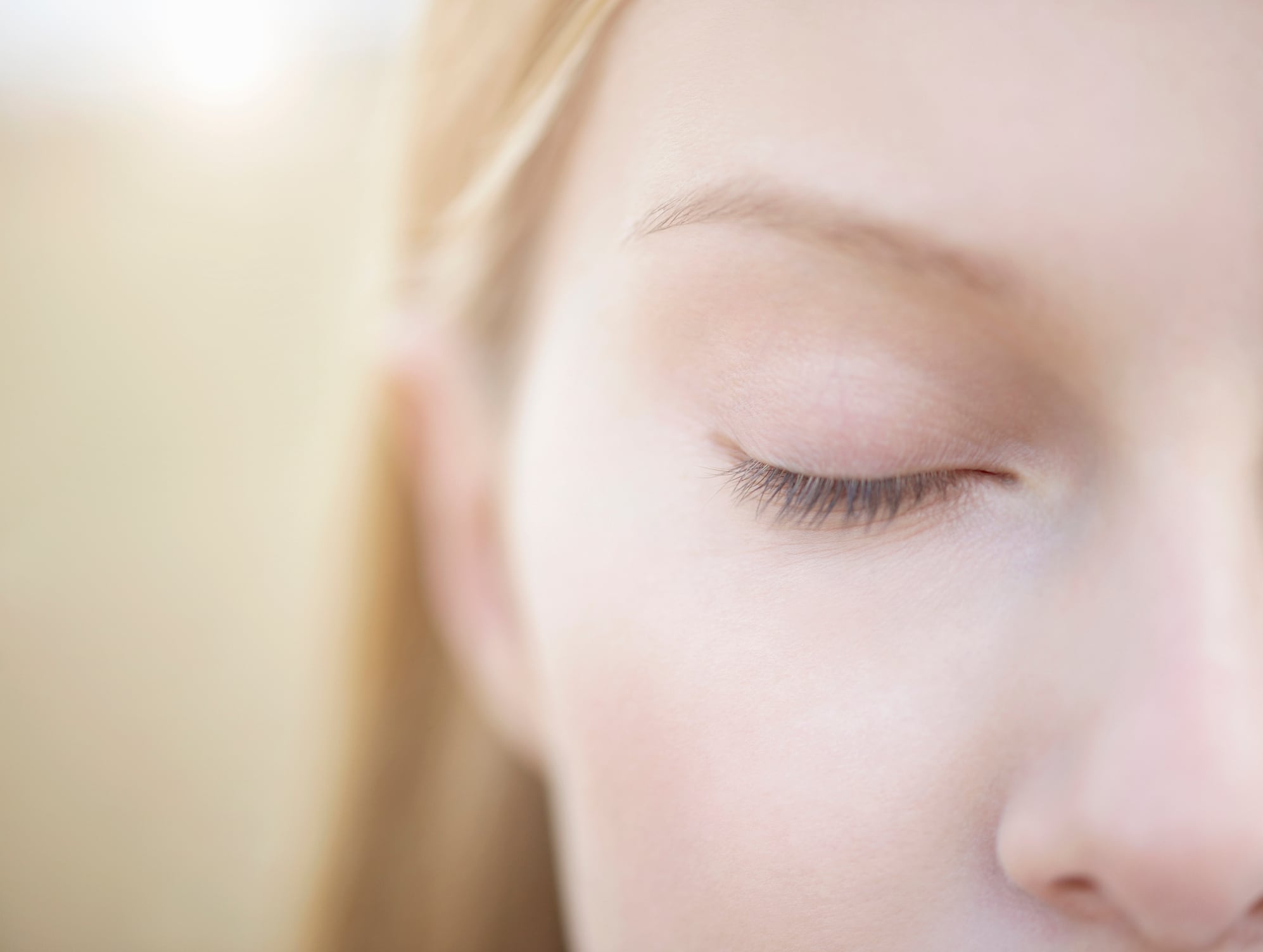The use of biotechnology to create plant-based ingredients and products no longer fits with traditional design and branding for ‘natural’ products, which leaves cosmetics companies with a dilemma of how to showcase brand values and ethos on pack design and in the creative campaigns for these new biopharming-based formulations.
The tech innovations such as biotechnology and AI that are being used to synthetically create 'natural’ ingredients are seemingly at odds with the previous go-to botanical images, gentle colours and 'nature-inspired design' that were once a popular choice for ‘natural’ and ‘clean’ beauty products. As a result, many creatives are opting for manipulated, high-definition visuals instead.
Forecasting company The Future Laboratory has picked up on this ‘Synthesised Beauty’ trend and outlined how it “boldly embraces high-tech, immaculate renderings that mirror the intricate details of digital art, juxtaposing bold hues and exaggerated forms against serene backdrops.”
Molecules for “very visual details”
For the founder of creative agency Free the Birds, Nick Vaus, the fact that these breakthrough ingredients are formulated at a molecular level is exciting and inspiring. “There is therefore an opportunity to explore product and packaging design which both champions and illustrates this,” he explained.
“There is a lovely way products could communicate both the molecular level detail and the inspiration in nature with a very clean look and feel: kind to the environment, kind to your skin. Both luxury and accessibly priced products have the opportunity to tap into a ‘quiet luxury’ look and feel,” he continued.
Vaus also highlighted that with very visual details like molecules, the “rising trend of haptic packaging that celebrates a rich variety of textures provides an opportunity to champion the science behind the product in the aesthetics of the packaging.”
Avoiding cookie-cutter sustainability typologies
The Future Laboratory stated that being bio-positive is a key attribute of most beauty companies today, therefore innovative brands can out from the crowd by “avoiding cookie-cutter sustainability typologies that portray nature’s delicate side and instead work with digital artists that create synthesised visuals and use fantastical colour tones to showcase its energetic beauty.”
It advised:
- “For set design – consider how you can showcase the ethereal aspects of nature – through digital effects or striking props – in a more powerful manner.
- In terms of composition – experiment with focus and angles to spotlight your sustainable products or ingredient components.
- Post-production – turn up the saturation and sharpness on your imagery to infuse it with distinctive character and intensity.”
Vaus also highlighted that the beauty industry is one of the best at utilising science in its branding and on-pack copywriting, as beauty consumers don’t tend to be intimidated by ingredients that are clearly rooted in science and technology, as they might with food or supplements for example.
However, he does flag up that due to the trend for natural and sustainable in recent years, the science needs to be “balanced with language that feels natural, approachable”.
“It should also recognise the positive impact biopharmed beauty has in sustainable production practices – the benefits of which there are many,” he advised.
Beauty brands leading the way
In terms of trailblazer brands that are already leading the way on this new design code, Vaus draws attention to K-18, a biomimetic hair care brand recently acquired by Unilever, as a great example. “Science is championed without the jargon that would confuse the purpose of each product. It is clean, communicates efficacy and most importantly, sustainability, all of which has most certainly supported its rapid growth,” he said.
He also highlighted Act+Acre’s embodiment of ‘quiet luxury’ – with its “easily understandable scientific language and a design that makes finding the right solution effortless.”
Vaus said he expected that the growing influence of HCPs and pharmacies in consumers’ beauty product discovery would also support the rise of biotech beauty, including the packaging of these products.
“K-18 is another strong example of this, with a range that plays with a colourful palette that appeals to younger, savvy audiences but with the look and feel of the much-loved staple products we see on pharmacy shelves such as La Roche Posay,” he concluded.





